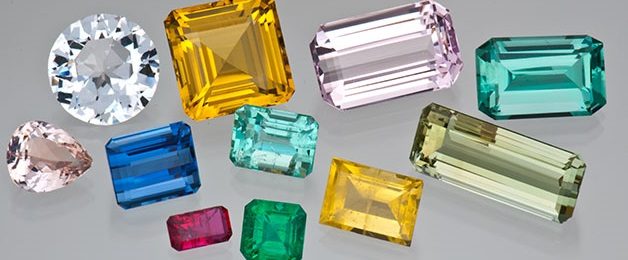I find the story of the “Star of India” fascinating, it is the story of the sapphire with the largest asterism in the world. I discovered it while writing about Asterism, also known as the star effect. This story is closely related to the history of a surf champion, but more on that later!
History of the Star of India
The Star of India has a carat weight of 536 carats, probably the largest sapphire ever to be cut, and it displays the surprising effect of a six pointed star. The peculiarity of this star is that the asterism is visible from both sides, on both the top and bottom side.
They grey-blue corundum was discovered around 300 years ago in Sri Lanka and was donated in 1901 by financier Jon Pierpont Morgan to the “American Museum of Natural History” in New York where it is has since been stored and displayed to the public, with the brief exception of 1964. It is not yet clear how JP Morgan has come into the possession of the Star of India, but it was most likely during one of his numerous trips to the Old Continent.
At this point it’s only natural to ask: why was a gemstone found in Sri Lanka, previously known as Ceylon until 1972, not called by the proper name “Star of Ceylon”? It is probable that the explanation comes from Sri Lanka’s colonial period, as in 1815 Ceylon was still a part of the British Empire. Another possible explanation is that the stone was sold in the continent and it was mistaken for a stone from India.
Either case can be argued, however what cannot be argued is that the story of the Star of India cannot be separated from, as the newspaper headlines called it, “the jewellery robbery of the century”.
The robbery of the century
On the 29th October 1964, the Star of India, a jewel about the size of a golf ball, was stolen from the Museum of Natural History in Manhattan. Nearly half a million dollars worth of jewels were stolen during the robbery. Alongside the Star of India, the “Midnight Star”, a black star sapphire, the Star Ruby DeLong and the Eagle Diamond were also stolen.
The robbery was well planned, although in the end it was not very difficult as the thieves had luck on their side. During the museums public opening hours, the thieves opened a window in one of the museums toilets and used this window to enter the museum that same evening. Just like in the movie “Topkapi”, they headed for the J.P Morgan Hall, although the Star of India was one of the few jewels in the museum to be secured by an alarm system, on this evening the batteries of said alarm were empty or defective and it was not set off by the thieves. The thieves succeeded in evading the museum security and made a haul of 22 precious gemstones of great value and beauty, and without trouble escaped through the same window by which they had entered.
A sure hit
The thieves’ joy did not last long, as they were tracked down by police 2 days later. Together with two accomplices, former surf champion Jack Murph was arrested. Also known as “Murph the Surf”, Jack Murph had numerous surfing successes including winning the National Hurricane Surfing Championship in 1963. The police were familiar with the talented thief, who was also a tennis player, artist and author, due to his previous criminal record and were therefore able to trace the crime quite quickly back to him. The haul of gemstones however, was not found so quickly. Some of the gems, including the Star of India, were recovered 2 months later, strangely found in a safety deposit box at a Miami bus station. While most of the gemstones were recovered after some time, the Eagle Diamond was lost.
The thieves were sentenced to three years in prison. Unfortunately “Murph the Surf” didn’t manage to direct his talent in the right direction, and in 1968 he was sentenced to life imprisonment after being charged with 2 murders.






